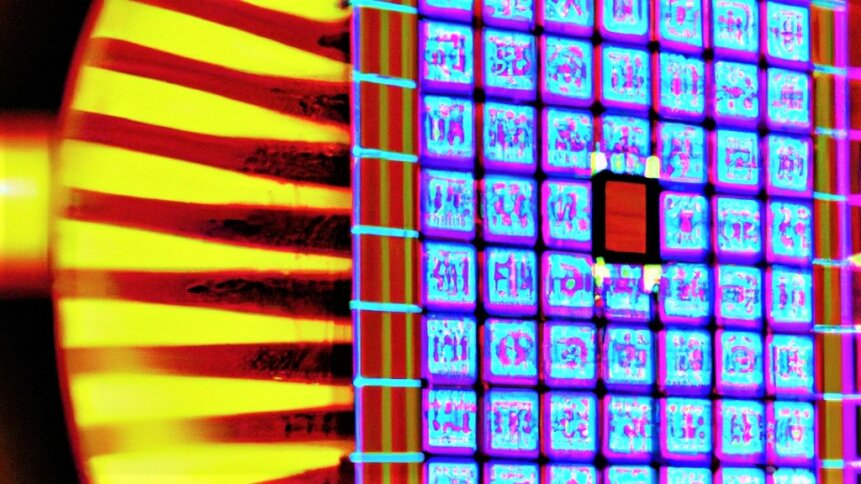Fault-tolerant quantum computing moves two-steps closer

|
Getting your Trinity Audio player ready...
|
Quantum computers put physics to work solving problems that classical machines struggle with. Rather than perform calculations using a combination of classical bits, 1’s or 0’s, quantum hardware is configured to amplify the probability of the correct answer. Quantum computations can follow different paths and are built around a series of operations (enabled using quantum gates, analogous to classical logic gates) that represent the problem that the user wishes to solve. The hardware allows a giant quantum interference experiment to take place and brings possibilities to the table that are out of reach of classical machines. But quantum data is fragile and subject to errors, which is why fault-tolerant quantum computing is so important to realizing practical and industrially relevant machines.
One of the downsides of turning a maths problem into a physics problem – which is one way of visualizing the difference between classical and quantum computing regimes – is that the real world suddenly gets in the way. Quantum bits (or qubits) are extremely sensitive to their surrounding environment. There are different ways of building qubits – for example, using trapped ions or quantum dots. And in the case of superconducting qubits – a design used by IBM, Google, D-Wave Systems, Oxford Quantum Circuits, and others – processors need to be kept at incredibly low temperatures comparable to the conditions of deep space.
Systems are so sensitive that even tiny amounts of heat transmitted through the wires used to program and read out data from the array of qubits can introduce errors by shifting quantum states out of position. But, presenting their work at the 2023 International Solid-State Circuits Conference, held in San Francisco, US, researchers have developed a wireless send and receive system that may solve this problem.
The team, which features members of the Quantum Physics Laboratory and Terahertz Integrated Electronic Group at MIT, based its wireless communication system around a tiny square transceiver chip measuring about 2 mm on each side. The chip is located inside the cryostat, which keeps the qubits at their super cold temperatures. And an array of miniature, micron-sized antennas, which can be controlled to reflect incident terahertz waves (a portion of the electromagnetic spectrum that can penetrate a wide range of materials), are key to its operation. Depending on their configuration, the antenna array can either reflect incoming waves in their original form, or invert them. A detector on the outside can then be programmed to interpret these signals as either a 1 or a 0, corresponding to the final state of the qubit.
Error correction and fault-tolerant quantum computing
While developers are keen to reduce the number of qubits affected by errors, they are unlikely ever to be able to rid systems of all disturbances completely. Classical computer processors (such as those found in laptops and smartphones) are subject to errors due to noise, manufacturing defects, or other issues. But chip makers get around this by applying error correction techniques. For example, imagine sending a single bit of information, say a binary one. If the channel were noisy, that information could be flipped to a zero. But sending multiple versions of the information and taking a majority vote on the data received would make it much more likely for the true value to persist.
Error correction schemes can also be applied to qubits to get towards fault-tolerant quantum computing. In fact, they have to be applied. Google Research estimates that error rates on its third-generation Sycamore processor are somewhere between 1 in 10,000 to 1 in 100. And to put this in perspective, it believes that rates in the range of 1 in 109 to 1 in 106 will be required to run quantum circuits that can solve industrially relevant problems.
Quantum error correction involves distributing a quantum state across many physical data qubits so that – if errors are rare and independent – the logical qubit (comprising many physical data qubits) will be preserved. But one of the problems that quantum computer developers have faced is that as the number of qubits increases so does the number of errors. However, a paper published in the journal Nature (open access) by Google Quantum AI shows that there may be light at the end of the tunnel.
“For the first time, we have gone beyond the break even point,” commented Hartmut Neven, Vice President of Quantum Engineering at Google Quantum AI. “When we went to a larger array of data qubits the error rate came slightly down.” In their work, the Google team engineered one-dimensional chains of qubits, known as quantum repetition codes, that alternate between the data qubits. And these quantum repletion codes were then used to measure the qubits to detect errors in the logical state.
The excitement surrounding quantum computing comes from the fact that there are a class of problems which, if solved using classical computers, would take many thousands of years to arrive at an answer. And that operational time can be switched to a much more efficient trajectory by configuring those problems using quantum computing architecture.









